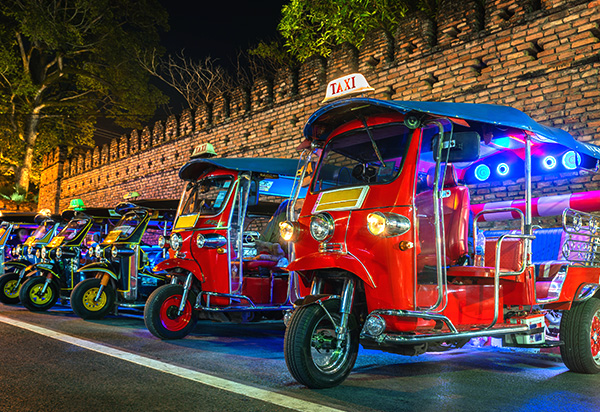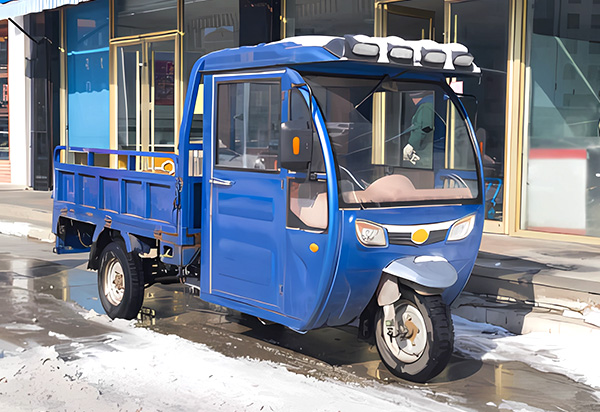- What ls an Electric Rickshaw?
- How do Electric Rickshaws Work?
- Types of Electric Rickshaws
- Key Applications
- Technical Parameters
- Pricing Factors
- Choosing the Right Model
- Beginner’s Operating Guide
- Specialized Use Cases
Electric rickshaws are a popular choice for short trips worldwide, especially for small businesses. They are used to carry people and goods, and are relied upon by entrepreneurs and small businesses—particularly in developing countries. Affordable and environmentally friendly, they are ideal for both city and rural areas. The latest models are well-made and offer great value for money.
So how do you buy one? What features should you look for, and how do you keep it in good condition? Making the right decision is crucial when buying any vehicle, and this guide will help you choose the best electric rickshaw for your needs.
What ls an Electric Rickshaw?
Electric rickshaws have been common in countries like China for years and are now gaining global popularity. They’re favored as affordable, convenient transportation solutions.
How they work: A battery beneath the seat powers a motor connected to the rear wheel. Pressing the accelerator engages the motor for propulsion.
Key advantages include zero emissions and low operating costs. Their compact size and simple charging make them ideal for families and small businesses.
How do Electric Rickshaws Work?
Most electric rickshaws are tricycles powered by lithium or lead-acid batteries stored under the driver’s seat. These batteries drive a rear-wheel motor.
Range and performance depend on battery capacity, terrain, passenger load, and cargo weight. Modern models feature advanced technology for greater hauling capacity and extended range per charge.
Types of Electric Rickshaws
Electric rickshaws are categorized by enclosure type:
- Fully Enclosed: Roof and side panels (car-like)
- Semi-Enclosed: Partial coverage (roof only or side panels only)
- Open-Air: No roof or side panels
Passenger capacity typically ranges from 2 to 6 people. Models also vary in performance characteristics and aesthetic designs.
Key Applications
Electric rickshaws serve diverse functions like multi-tools:
Fleet Vehicles:
Businesses favor them for eco-friendly operations, cost efficiency, and versatility in short/long trips. Easy operation enables quick employee training.
Tourism:
Replacing noisy gas-powered tuk-tuks in destinations like Thailand, they offer enjoyable, emission-free sightseeing.
Suburban Transport:
Residents use them for errands, school runs, and social trips in gated communities—providing greater range than golf carts at lower cost.
Taxi Services:
Drivers in developing countries prefer them for lower maintenance costs, fuel savings, and easy parking in tight spaces.
Technical Parameters
| PARAMETER | SPECIFICATION |
|---|---|
| BRAND | JASNON VEHICLE |
| POWER | 500W – 5000W |
| SPEED | 20 km/h – 60 km/h |
| BATTERY | 20Ah-200Ah |
| LOAD CAPACITY | 2-6 Passengers |
| BRAKE TYPE | Mechanical Drum Brake / Disc brake |
Pricing Factors
Electric rickshaw costs vary based on:
- Usage: Personal vs. Commercial
- Daily mileage requirements
- Battery type (lithium vs. lead-acid)
- Passenger capacity
While some manufacturers offer full customization, most provide configurable options like colors, displays, roof types, and tires.
Choosing the Right Model
Selecting the optimal electric rickshaw requires considering:
- Battery Life: Match battery capacity to your daily distance needs
- Weight Capacity: For commercial use (passengers/cargo), choose higher load ratings to prevent frame strain or premature battery wear
- Terrain: Opt for robust wheels and more powerful motors if operating on rough or off-road terrain
Consult manufacturers or dealers to identify your ideal model. The right choice ensures better long-term performance and lower maintenance costs.
Beginner’s Operating Guide
Electric rickshaws provide affordable, eco-friendly mobility in urban and rural settings. They’re simple to operate with minimal learning curve.
New user tips:
1. Master Controls:
- Throttle: Right handlebar (motorcycle-style)
- Brake lever: Left handlebar
- Headlight switch: Near left grip
*Practice in safe, traffic-free areas first*
- Stay Alert:
Maintain constant awareness of surroundings, especially on sidewalks or busy roads
- Charge Regularly:
Recharge after each use. Daily users should install a home charging station for convenience.
Experience the freedom of electric rickshaws—select your model today and start exploring!
Specialized Use Cases

Tuk-Tuk Tours
Open-air designs provide immersive sightseeing experiences in cities or countryside.

Agricultural Use
Four-wheel models handle farm patrols and produce transport on rough terrain.

Cargo & Delivery
Enclosed cargo variants efficiently transport goods to markets or distribution points.


